Connect With Us
Blog
What Can Be Done About Bunions
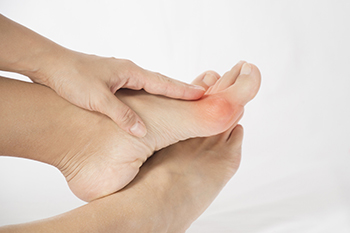
A bunion is medically referred to as a hallux valgus. It is a deformity of the metatarsophalangeal joint at the base of the big toe. This type of malformation can develop when the first metatarsal bone in the foot turns out, and the big toe shifts toward the other toes. Eventually, the fluid-filled sac that surrounds and cushions the joint may become inflamed, and the entire joint can become stiff and painful. A bunion can interfere with walking or exercising. Additionally, it can be difficult to find shoes that accommodate this protrusion, and if shoes do not fit properly, extra pressure may be put on this misaligned joint. Bunions are more common in women. Perhaps this is because women are more apt to wear narrow, pointed, or high-heeled shoes. Bunions can also be genetic, or may develop from an underlying illness, such as arthritis, or an abnormal foot structure. Some foot problems, such as high arches or flat feet, can predispose one to getting a bunion. A podiatrist can determine the severity of a bunion and recommend the appropriate treatment for it. If you have a bunion, it is suggested that you make an appointment with this type of doctor for an examination and relief options.
If you are suffering from bunions, contact one of our podiatrists of The Podiatry Center, PC. Our doctors can provide the care you need to keep you pain-free and on your feet.
What Is a Bunion?
A bunion is formed of swollen tissue or an enlargement of boney growth, usually located at the base joint of the toe that connects to the foot. The swelling occurs due to the bones in the big toe shifting inward, which impacts the other toes of the foot. This causes the area around the base of the big toe to become inflamed and painful.
Why Do Bunions Form?
Genetics – Susceptibility to bunions are often hereditary
Stress on the feet – Poorly fitted and uncomfortable footwear that places stress on feet, such as heels, can worsen existing bunions
How Are Bunions Diagnosed?
Doctors often perform two tests – blood tests and x-rays – when trying to diagnose bunions, especially in the early stages of development. Blood tests help determine if the foot pain is being caused by something else, such as arthritis, while x-rays provide a clear picture of your bone structure to your doctor.
How Are Bunions Treated?
- Refrain from wearing heels or similar shoes that cause discomfort
- Select wider shoes that can provide more comfort and reduce pain
- Anti-inflammatory and pain management drugs
- Orthotics or foot inserts
- Surgery
If you have any questions, please feel free to contact our office located in Millburn, NJ . We offer the newest diagnostic and treatment technologies for all your foot care needs.
Gout Pain Can Be Managed
Types of Foot Arthritis
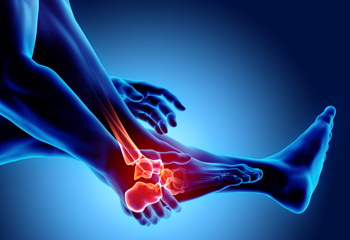
There are many different types of arthritis, including osteoarthritis, rheumatoid arthritis, and psoriatic arthritis. Each of these types of arthritis can affect the joints in the feet, ankles, and toes. Arthritis that affects the lower extremities can limit the range of joint motion and sometimes make it difficult to walk. Pain is a common symptom of all types of arthritis. Arthritis cannot be cured but relief can often be found. Such relief can come from wearing well-fitting, supportive shoes, doing stretching and strengthening exercises, and rest. If you suffer from arthritis and it is causing you chronic pain, it is suggested that you consult with a podiatrist to see what other help may be available to you.
Arthritis can be a difficult condition to live with. If you are seeking treatment, contact one of our podiatrists from The Podiatry Center, PC. Our doctors can provide the care you need to keep you pain-free and on your feet.
Arthritic Foot Care
Arthritis is a joint disorder that involves the inflammation of different joints in your body, such as those in your feet. Arthritis is often caused by a degenerative joint disease and causes mild to severe pain in all affected areas. In addition to this, swelling and stiffness in the affected joints can also be a common symptom of arthritis.
In many cases, wearing ill-fitting shoes can worsen the effects and pain of arthritis. Wearing shoes that have a lower heel and extra room can help your feet feel more comfortable. In cases of rheumatoid arthritis, the arch in your foot may become problematic. Buying shoes with proper arch support that contour to your feet can help immensely.
Alleviating Arthritic Pain
- Exercises that stretch the foot can prevent further pain and injury and increase mobility
- Most of the pain can be alleviated with anti-inflammatory drugs, heat, and topical medications
- Massages can help temporarily alleviate pain.
It is best to see your doctor for the treatment that is right for your needs and symptoms. Conditions vary, and a podiatrist can help you determine the right method of care for your feet.
If you have any questions, please feel free to contact our office located in Millburn, NJ . We offer the newest diagnostic tools and technology to treat your foot and ankle needs.
Cotton Socks and Blisters

Blisters on the feet can be an annoyance to anyone that develops them because they can cause potential pain and discomfort. Some individuals recommend wearing cotton socks to prevent the development of blisters. However, it is important to note that this is not a cure-all remedy because blisters can still form when wearing cotton socks. Specifically, since cotton socks retain moisture on the skin of the feet, this added moisture can essentially increase the friction that causes blisters in the first place. Rather, an effective way to prevent the onset of blisters is to wear shoes that fit properly and are spacious enough not to cause rubbing. If you are someone that is concerned about the development of blisters on the feet, it is suggested that you contact a podiatrist for an appointment.
Blisters are prone to making everyday activities extremely uncomfortable. If your feet are hurting, contact one of our podiatrists of The Podiatry Center, PC. Our doctors can provide the care you need to keep you pain-free and on your feet.
Foot Blisters
Foot blisters develop as a result of constantly wearing tight or ill-fitting footwear. This happens due to the constant rubbing from the shoe, which can often lead to pain.
What Are Foot Blisters?
A foot blister is a small fluid-filled pocket that forms on the upper-most layer of the skin. Blisters are filled with clear fluid and can lead to blood drainage or pus if the area becomes infected.
How Do Blisters Form?
Blisters on the feet are often the result of constant friction of skin and material, usually by shoe rubbing. Walking in sandals, boots, or shoes that don’t fit properly for long periods of time can result in a blister. Having consistent foot moisture and humidity can easily lead to blister formation.
Prevention & Treatment
It is important to properly care for the affected area in order to prevent infection and ease the pain. Do not lance the blister and use a Band-Aid to provide pain relief. Also, be sure to keep your feet dry and wear proper fitting shoes. If you see blood or pus in a blister, seek assistance from a podiatrist.
If you have any questions, please feel free to contact our office located in Millburn, NJ . We offer the newest diagnostic and treatment technologies for all your foot care needs.
Are Bunions Affecting Your Everyday Life?
What Is an Ankle Sprain?

An ankle sprain is an overstretched or torn ligament in the ankle that can happen for various reasons. One may step off a curb unexpectedly or land on the foot in the wrong direction. Common symptoms that many people experience can include immediate swelling and bruising, and it is often difficult to walk. Sometimes a popping sound may be heard if the sprain is severe, and the pain can be debilitating. A diagnosis is needed to determine if the injury is a fracture or a sprain. An X-ray will be taken, followed by beginning the correct treatment. Ankle sprains will heal faster when the foot is elevated and the weight is kept off the affected foot as much as possible. Many people choose to use a walking aid that is generally effective in restoring mobility. If you have ankle pain or fear you may have sprained it, it is suggested that you confer with a podiatrist who can confirm this and offer you the correct treatment options
Although ankle sprains are common, they aren’t always minor injuries. If you need your ankle injury looked at, contact one of our podiatrists from The Podiatry Center, PC. Our doctors can provide the care you need to keep you pain-free and on your feet.
How Does an Ankle Sprain Occur?
Ankle sprains are the result of a tear in the ligaments within the ankle. These injuries may happen when you make a rapid shifting movement while your foot is planted. A less common way to sprain your ankle is when your ankle rolls inward while your foot turns outward.
What Are the Symptoms?
- Pain at the sight of the tear
- Bruising/Swelling
- Ankle area is tender to touch
- In severe cases, may hear/feel something tear
- Skin discoloration
Preventing a Sprain
- Wearing appropriate shoes for the occasion
- Stretching before exercises and sports
- Knowing your limits
Treatment of a Sprain
In many cases, the RICE method (Rest, Ice, Compression, and Elevate) is used to treat ankle sprains. However, you should see a podiatrist to see which treatment option would work best with your injury. In severe cases, surgery may be required.
It is important to ask your doctor about rehab options after you receive treatment for your injury. Stretching, strength training, and balance exercises may help the ankle heal while also preventing further injury.
If you have any questions, please feel free to contact our office located in Millburn, NJ . We offer the newest diagnostic and treatment technologies for all your foot care needs.
What Is a Verruca?
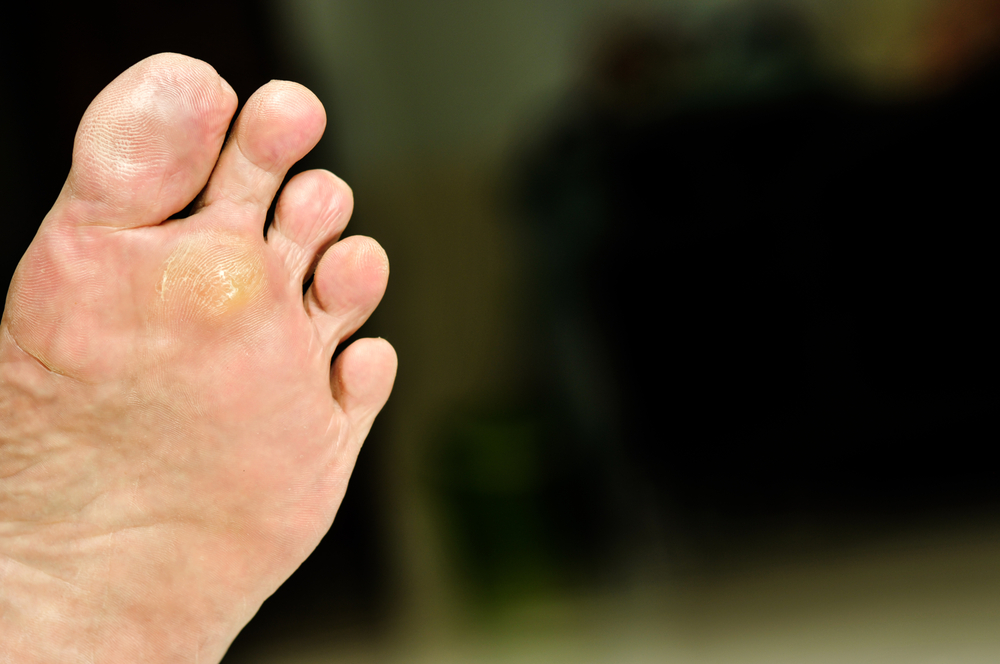
A verruca is a wart that appears on the feet. Such warts have tiny black dots under hard skin. While warts are generally harmless, some cause itchiness and pain. Depending on one’s personality, a person with a verruca might also experience embarrassment. A verruca or foot wart is caused by a virus, and it can therefore be contagious through contaminated surfaces or skin contact. It is important to keep the feet dry, wear foot coverings in public places, and not pick or scratch a foot wart. A verruca can be frozen off the foot, and though it may take a few sessions, this treatment should cause the wart to fall off. If you have a verruca, it is suggested that you contact a podiatrist for a proper diagnosis and treatment.
Plantar warts can be very uncomfortable. If you need your feet checked, contact one of our podiatrists from The Podiatry Center, PC. Our doctors will assist you with all of your foot and ankle needs.
About Plantar Warts
Plantar warts are the result of HPV, or human papillomavirus, getting into open wounds on the feet. They are mostly found on the heels or balls of the feet.
While plantar warts are generally harmless, those experiencing excessive pain or those suffering from diabetes or a compromised immune system require immediate medical care. Plantar warts are easily diagnosed, usually through scraping off a bit of rough skin or by getting a biopsy.
Symptoms
- Lesions on the bottom of your feet, usually rough and grainy
- Hard or thick callused spots
- Wart seeds, which are small clotted blood vessels that look like little black spots
- Pain, discomfort, or tenderness of your feet when walking or standing
Treatment
- Freezing
- Electric tool removal
- Laser Treatment
- Topical Creams (prescription only)
- Over-the-counter medications
To help prevent developing plantar warts, avoid walking barefoot over abrasive surfaces that can cause cuts or wounds for HPV to get into. Avoiding direct contact with other warts, as well as not picking or rubbing existing warts, can help prevent the further spread of plantar warts. However, if you think you have developed plantar warts, speak to your podiatrist. He or she can diagnose the warts on your feet and recommend the appropriate treatment options.
If you have any questions please feel free to contact our office located in Millburn, NJ . We offer the newest diagnostic and treatment technologies for all your foot and ankle needs.
Are You Suffering From Ingrown Toenails?
Symptoms and Causes of Metatarsalgia
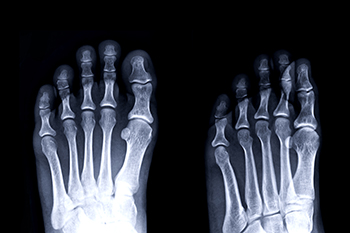
Pain in the ball of the foot is termed metatarsalgia because it is felt in the area of the metatarsal bones. Metatarsalgia can affect one or all of the five metatarsal bones that connect the toes to the other bones of the foot. Symptoms include a burning or an aching sensation, a sharp shooting pain, and tingling or numbness. Some patients report a feeling of having a tiny pebble inside their shoe under the ball of the foot. One of the most common causes of metatarsalgia is footwear that fits improperly. High heels with pointy toes are frequently a cause of metatarsal pain because these shoes force the ball of the foot into a small space. Another cause of metatarsalgia is high-impact sports, especially running, that put extra pressure on the ball of the foot. Other reasons for metatarsalgia include being overweight, arthritis, certain foot deformities, and aging. If you have pain in the ball of the foot that continues to worsen, it is suggested that you consult a podiatrist for guidance.
Foot Pain
Foot pain can be extremely painful and debilitating. If you have a foot pain, consult with one of our podiatrists from The Podiatry Center, PC. Our doctors will assess your condition and provide you with quality foot and ankle treatment.
Causes
Foot pain is a very broad condition that could be caused by one or more ailments. The most common include:
- Bunions
- Hammertoes
- Plantar Fasciitis
- Bone Spurs
- Corns
- Tarsal Tunnel Syndrome
- Ingrown Toenails
- Arthritis (such as Gout, Rheumatoid, and Osteoarthritis)
- Flat Feet
- Injury (from stress fractures, broken toe, foot, ankle, Achilles tendon ruptures, and sprains)
- And more
Diagnosis
To figure out the cause of foot pain, podiatrists utilize several different methods. This can range from simple visual inspections and sensation tests to X-rays and MRI scans. Prior medical history, family medical history, and any recent physical traumatic events will all be taken into consideration for a proper diagnosis.
Treatment
Treatment depends upon the cause of the foot pain. Whether it is resting, staying off the foot, or having surgery; podiatrists have a number of treatment options available for foot pain.
If you have any questions, please feel free to contact our office located in Millburn, NJ . We offer the newest diagnostic and treatment technologies for all your foot care needs.
Childhood Obesity Links to Foot Pain
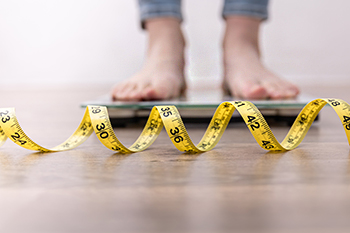
Obese children are subject to high stress on their growing feet, which can lead to developing a structural foot deformity. In a study of obese children, flat feet, a limited range of motion in the ankle, and greater pain were more prevalent among them. It is beneficial that losing weight is a goal for obese children if they want to walk, run, and participate in activities pain free. A healthy diet geared towards weight loss and participating in exercise are the best ways to lose weight. Subjecting feet to more pressure over time can lead to chronic foot problems. If your child is overweight or obese, it is suggested that you see a podiatrist who can help them choose the right footwear, in addition to recommending an exercise plan that will help them lose excess weight.
The more you weigh, the harder your feet must work to support your body. If you’re an obese individual and are concerned about your feet, contact one of our podiatrists from The Podiatry Center, PC. Our doctors can provide the care you need to keep you pain-free and on your feet.
Obesity and Your Feet
People who are overweight are putting more pressure on their ankles, knees, and hips as well as their feet. This unfortunately can lead to variety of different issues.
Problems & Complications Stemming from Obesity
- When the body is overweight, it tries to compensate by changing the way that it moves. An obese person may lean forward and put extra weight on the wrong part of the foot. This puts unnecessary stress on the feet.
- Obese people are also more likely to develop type II diabetes which is a condition that causes a lot of foot problems. People with diabetes often don’t feel the cuts and sores that they may have on their feet, which can lead to more complicated and severe issues.
- Plantar fasciitis is another foot condition that can be caused by obesity. Plantar fasciitis is an inflammation of the tissue along the bottom of the foot, which causes pain and stiffness while walking and climbing stairs.
If you have any questions, please feel free to contact our office located in Millburn, NJ . We offer the newest diagnostic and treatment technologies for all your foot care needs.
More...
Reminder: When Was the Last Time...?
Symptoms of Poor Circulation

Common symptoms of poor circulation can include cold feet, a loss of feeling in the fingers and feet, and the skin may become discolored. When circulation is normal, the blood, oxygen and nutrients are transported freely through the blood vessels. Patients who have poor circulation have blood vessels that have become closed or hardened, causing the blood to move slower through these vessels. Additional symptoms of reduced or poor circulation can consist of weakened toenails, cracked skin, and existing wounds may heal slowly. This ailment can be indicative of underlying conditions. People who have Raynaud’s disease have limited blood flow to their extremities, which may be triggered by stress. Elevated glucose levels in diabetic patients may cause the arteries to narrow and blood vessels to become damaged, possibly leading to poor circulation. If you have any of these conditions, including a numbing sensation in your feet, it is suggested that you speak with a podiatrist who can effectively diagnose and treat poor circulation.
While poor circulation itself isn’t a condition; it is a symptom of another underlying health condition you may have. If you have any concerns with poor circulation in your feet contact one of our podiatrists of The Podiatry Center, PC. Our doctors will treat your foot and ankle needs.
Poor Circulation in the Feet
Peripheral artery disease (PAD) can potentially lead to poor circulation in the lower extremities. PAD is a condition that causes the blood vessels and arteries to narrow. In a linked condition called atherosclerosis, the arteries stiffen up due to a buildup of plaque in the arteries and blood vessels. These two conditions can cause a decrease in the amount of blood that flows to your extremities, therefore resulting in pain.
Symptoms
Some of the most common symptoms of poor circulation are:
- Numbness
- Tingling
- Throbbing or stinging pain in limbs
- Pain
- Muscle Cramps
Treatment for poor circulation often depends on the underlying condition that causes it. Methods for treatment may include insulin for diabetes, special exercise programs, surgery for varicose veins, or compression socks for swollen legs.
As always, see a podiatrist as he or she will assist in finding a regimen that suits you. A podiatrist can also prescribe you any needed medication.
If you have any questions, please feel free to contact our office located in Millburn, NJ . We offer the newest diagnostic and treatment technologies for all your foot care needs.
Do You Stand All Day for Work?

Some professionals spend the majority of the working day on their feet. They can range from hairdressers to massage therapists. Sore feet may happen toward the end of the day because of blood pooling in the ankles and feet. It is an obvious choice to wear shoes that are comfortable, preferably with a lower heel and cushioned sole. Foot pain may be reduced while standing on a stress mat. This is a rubber mat that is successful in allowing blood flow to reach the feet, which may help in maintaining good circulation. Additionally, wearing compression socks can help overall blood flow to the body, and can help to reduce strain on the joints and muscles. At the end of the day, many people enjoy soaking their feet. This can be a reward for the feet for standing all day. If you have questions about relief tips from working on your feet, it is suggested that you speak with a podiatrist who can help you with the information you are seeking.
While working on the feet, it is important to take the proper care of them. For more information about working on your feet, contact one of our podiatrists from The Podiatry Center, PC. Our doctors will treat your foot and ankle needs.
Working on Your Feet
Standing on your feet for long periods of time can cause stress and pain in your feet. Your whole body may experience change in terms of posture, back pain, bunions, callouses and or plantar warts. There are ways to avoid these conditions with proper foot care, smart choices and correct posture.
Positive Changes
Negative heeled shoe – Choosing this shoe type places the heel slightly lower than the ball of the foot. These are great for overall foot health. Find shoes that fit you correctly.
Go barefoot – Our feet were not designed to be enclosed for all hours of the day. Try to periodically expose your feet to air.
Eliminate Pain
Foot Exercises – Performing simple exercises, incorporating yoga and doing stretches are beneficial. This will allow increased blood flow to the area and muscles of the foot.
Achilles tendon – Stretching the foot out flat on the floor will relax the calf muscles and tendon. These exercises can be performed almost anywhere. Make sure you add these exercises to your daily regimen.
With a little bit of this information and knowing more about foot health, you will notice changes. Foot stretches and proper footwear will help with pain and prevent further issues.
If you have any questions please feel free to contact our office located in Millburn, NJ . We offer the newest diagnostic and treatment technologies for all your foot and ankle needs.
Why Live with Pain and Numbness in Your Feet?
Blog Archives
- June 2025
- May 2025
- April 2025
- March 2025
- February 2025
- January 2025
- December 2024
- November 2024
- October 2024
- September 2024
- August 2024
- July 2024
- June 2024
- May 2024
- April 2024
- March 2024
- February 2024
- January 2024
- December 2023
- November 2023
- October 2023
- September 2023
- August 2023
- July 2023
- June 2023
- May 2023
- April 2023
- March 2023
- February 2023
- January 2023
- December 2022
- November 2022
- October 2022
- September 2022
- August 2022
- July 2022
- June 2022
- May 2022
- April 2022
- March 2022
- February 2022
- January 2022
- December 2021
- November 2021
- October 2021
- September 2021
- August 2021
- July 2021
- June 2021
- May 2021
- April 2021
- March 2021
- February 2021
- January 2021
- December 2020
- November 2020
- October 2020
- September 2020
- August 2020
- July 2020
- June 2020
- May 2020
- April 2020
- March 2020
- February 2020
- January 2020
- December 2019
- November 2019
- October 2019
- September 2019
- August 2019
- July 2019
- June 2019
- May 2019
- April 2019
- March 2019
- February 2019
- January 2019
- December 2018
- November 2018
- October 2018
- September 2018
- August 2018
- July 2018
- June 2018
- May 2018
- April 2018
- March 2018
- February 2018
- January 2018
- December 2017
- November 2017
- October 2017
- September 2017
- August 2017
- July 2017
- June 2017
- May 2017
- April 2017
- March 2017
- February 2017
- January 2017
- December 2016
- November 2016
- October 2016
- September 2016
- August 2016
- July 2016
- June 2016
- May 2016
- April 2016
- March 2016
- February 2016
- January 2016
- December 2015
- November 2015
- October 2015
- September 2015
- August 2015
- July 2015
- June 2015
- May 2015
- January 2014
- December 2013
- November 2013
- October 2013
- September 2013
- August 2013
- July 2013
- June 2013
- May 2013
- April 2013
- March 2013
- February 2013
- January 2013
- December 2012
- November 2012
- October 2012
- September 2012
- August 2012
- July 2012
- June 2012





